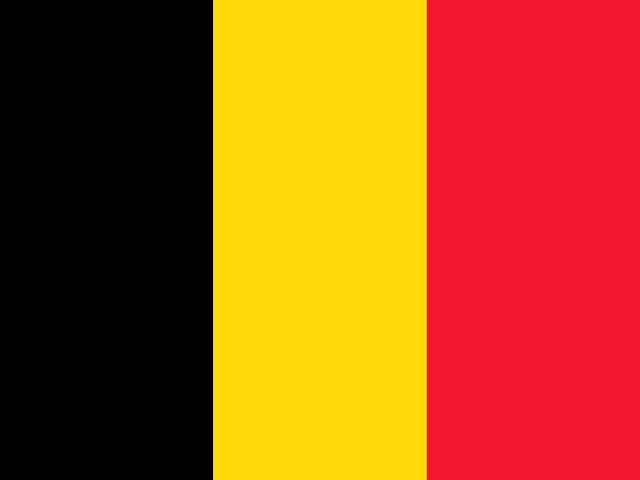
Belgium
Belgium’s media landscape is characterised by its division between the Dutch-speaking Flemish region and the French-speaking Wallonia. While digital consumption continues to rise, key industry players are adapting through strategic partnerships and new offerings. Meanwhile, policy changes, such as the reduction of newspaper distribution subsidies, are reshaping the news media market.
In Belgium, readership trends remain stable, as the growing number of digital news users makes up for faltering print audiences. According to data from the Centre for Information on the Media (CIM) from November 2024, Flemish daily newspapers collectively reach 3.5 million readers, maintaining a relative reach of 37%. The total audience across all platforms continues to grow modestly – largely because of population growth. Among quality newspapers, De Standaard remains the largest, with a total daily reach of 624,000 readers, up 4% from the previous year. Meanwhile, Het Laatste Nieuws (2,145,400) and Het Nieuwsblad (1,520,890) continue to dominate overall readership figures.1
In Wallonia, CIM figures confirm the continued digitalisation of the media landscape with the online audience of francophone newspapers increasing by 55.6% since 2017. Le Soir strengthens its position as the leading quality newspaper, reaching 797,610 daily readers – a 7.7% increase from the previous year. Its owner, Rossel, gradually rolled out a new format across its titles called Verified Vertical Videos in an attempt to cater to younger, digital audiences. Beyond the quality press, local news publisher Sudinfo continues to attract the largest audience, with nearly one million daily readers across its various titles including La Meuse and La Capitale.2
Despite these audience trends, economic pressures are evident. In February, Het Laatste Nieuws (HLN) laid off eight journalists, a direct result of declining digital revenues and the end of government subsidies for newspaper distribution announced last year, the latter being a major policy shift that is still reverberating across the newspaper industry. Amid financial uncertainty, Belgian publishers are finding new revenue streams. Catching up with their Walloon counterparts, DPG Media, HLN’s parent company, Mediahuis, and Roularta have together secured agreements with Google News Showcase, ensuring compensation for their content. The deal is framed as a way to expand reach and engage new audiences. When it comes to actively negotiating with AI firms, however, Belgian publishers lack a unified front, raising concerns that larger entities may secure beneficial deals while smaller outlets struggle.
The audio-visual sector is also facing structural challenges. Broadcasters VTM (DPGMedia) and Play Media (Telenet) warn of potential financial losses by 2026 unless fiscal and advertising policies are reformed. They are lobbying for stricter regulations on tech giants' advertising operations and advocating for a tax break (lower VAT) for advertising in regional media. The sector’s struggles are driven by the rise of international streaming platforms and an annual income decline of 2.2% due to people abandoning linear TV in favour of streaming services. The companies argue that, without some policy change, this could lead to job losses and reduced production investment, particularly in their news operations. In Wallonia, 24-hour news channel LN24 is also looking for new investment – for which it surprisingly started talks with public broadcaster RTBF, something the Walloon Minister of Media Jacqueline Galant was quick to block.
In this challenging context, funding for investigative journalism remains a contentious issue. The Association of Investigative Journalists (VVOJ) argues that Flanders significantly underfunds the sector compared to the Netherlands, allocating just €510,000 annually versus the Netherlands’ €7m. The Flemish Minister of Media highlights broader support for media initiatives, but critics contend that funding is disproportionately channelled towards media industry projects rather than direct support for journalism. With €486,000 yearly, the situation is similar in Wallonia, where 75% of the beneficiaries in 2024 were freelancers.
The stabilisation of print readership in Wallonia and the resilience of Flemish newspapers indicate continued relevance for traditional media, but economic sustainability will depend on strategic adaptation. One example is that AI is increasingly integrated into journalistic workflows, mainly for tasks such as transcription and editing, but its use for content creation is limited, with only 14% of Flemish journalists utilising generative AI daily.3 Meanwhile, ethical concerns are growing. De Morgen and De Standaard have strategically decided to leave the social media platform X due to concerns about Elon Musk's values being at variance with their own and those of a democratic society.
Ike Picone
Associate Professor of Journalism and Media Studies, Vrije Universiteit Brussel
Pay for online news
16%
(+1)
Flemish-speaking: 17%
French-speaking: 14%
Trust in news overall
43%
(-1)
=17/48
Flemish-speaking: 51%
French-speaking: 35%
Flemish-speaking Flanders (51%) and French-speaking Wallonia (35%) continue to feature a significant trust gap. This gap also translates to brand trust scores, which are significantly higher and more resilient in Flanders than in Wallonia. In both markets, the respective public broadcasters VRT and RTBF remain the most trusted news sources, even though some commercial organisations feature similarly high scores.

